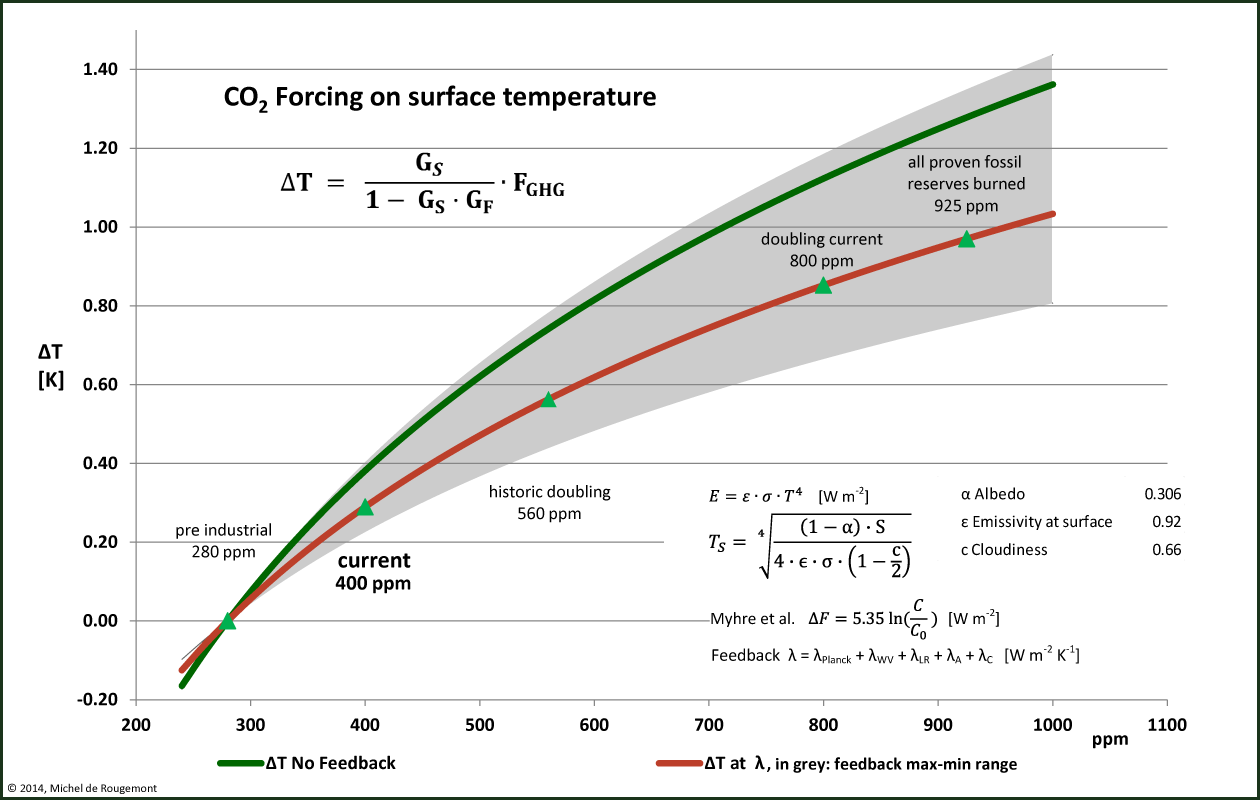In the calculation of the Two Layers Model we found that surface temperature TS is sensible to 4 basic parameters:
- For each 1 W m-2 increase of solar constant S, TS and TTOA will increase by 0.05 °C
- For each 0.01 increase of albedo α, TS decreases by 1.04 °C, and TTOA by 1.15 °C.
- For each 0.01 increase of cloudiness c, TS increases by 0.54 °C, TTOA by 0.45 °C.
- For each 0.01 increase of surface emissivity ε, TS decreases by 0.78 °C.
- For each 1 W m-2 due to radiative forcing, TS will increase by 0.2 °C and TTOA by 0.33 °C.
By feedback mechanisms, changes due to radiative forcing – from natural or artificial causes – will impact on either albedo α, cloudiness c, or emissivity ε.
This can take place more or less rapidly, and the energy balance around the Earth will therefore be respected.
To calculate the temperature sensitivity to CO2, feedback calculations can be made for concentrations at pre-industrial time, or in a possible future. In the following diagram, error margins for the feedback factors are also represented.
This is incredibly not new, but astonishing!
Temperature response to radiative forcing by CO2 alone with feedback.
Read like this:
with currently 400 ppm, CO2 contribution to warming is 0.29 °C when including a feedback of -1.59 W m-2 K-1.
Or: when the historic CO2 concentration will have doubled to reach 560 ppm, the temperature will have increased by an additional 0.27 °C (total “equilibrium temperature sensitivity” = 0.56 °C).
Or: if the feedback is weak (even slightly positive), the current CO2 contribution to warming may be 0.40 °C
The so-called Equilibrium Climate Sensitivity, the temperature increase corresponding to any doubling of the CO2 concentration, is 0.6 ±0.2 °C.
And let’s repeat: IPCC’s affirmation that ECS lies between 1.5 and 4.5 °C is based on a gross mistake that is perpetuated by the co-chair of the Working Group I, and on a mono-causal attribution of all temperature increase to so-called greenhouse gases.



